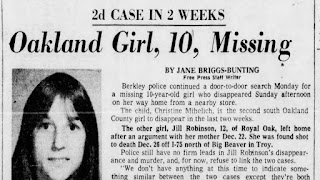The Smiley Face Killer theory has captured public intrigue and speculation for years. This controversial hypothesis suggests a connection between a series of drownings in various U.S. cities, with the presence of a smiley face graffiti near the crime scenes. While it remains a subject of debate among law enforcement agencies and experts, let's delve into the details of the alleged crime scenes that are associated with this enigmatic theory.
The Origins of the Smiley Face Killer Theory
The Smiley Face Killer theory emerged in the early 2000s when two retired New York City detectives, Kevin Gannon and Anthony Duarte, began investigating a string of mysterious drownings in the Midwest. They noticed a commonality—a smiley face graffiti near the locations where the victims were found. This observation sparked a controversial theory that a serial killer might be responsible for these deaths.
The Drowning Victims and the Smiley Face Connection
The Smiley Face Killer theory links over 40 cases of young men who were found dead in bodies of water across the United States. Many of these victims were college-aged males who had been reported missing before their bodies were discovered. The presence of a smiley face symbol, either painted or carved, near the crime scenes, led some to believe that these deaths were not accidental.
The Controversy Surrounding the Theory
Law enforcement agencies and experts remain divided on the validity of the Smiley Face Killer theory. Some argue that these incidents are unrelated, pointing to the lack of concrete evidence linking the cases. Skeptics believe that the smiley face graffiti may simply be coincidental or the result of copycats seeking media attention. Others, however, argue that commonalities among the cases suggest a sinister pattern.
Criticisms and Counterarguments
Critics of the Smiley Face Killer theory highlight several issues that challenge its credibility. Some argue that accidental drownings or alcohol-related incidents could account for many of the deaths, while others question the methodology used to identify smiley face symbols and their connection to the crimes. Moreover, skeptics point out that the theory's lack of consensus among law enforcement agencies raises doubts about its validity.
Investigations and Disputed Cases
Law enforcement agencies have conducted their own investigations into the alleged Smiley Face Killer cases. While some have concluded that the drownings were accidental or not related, others have remained open to the possibility of foul play. Notable disputed cases include those of Patrick McNeill, Christopher Jenkins, and William Hurley, where questions surrounding the cause of death and the smiley face symbol persist.
Victims of the Smiley Face Killer Theory: Examining Their Mysterious Deaths
The Smiley Face Killer theory proposes a chilling connection between a series of drownings across the United States and the presence of a smiley face graffiti near the crime scenes. While the theory remains disputed, the cases associated with it continue to puzzle investigators and fuel speculation. In this article, we delve into the details of the victims believed to be part of the Smiley Face Killer theory, shedding light on the circumstances surrounding their tragic deaths.
Patrick McNeill - New York, New York
Patrick McNeill, a 21-year-old student at Fordham University, went missing in February 1997 after a night out with friends. His body was discovered two months later in the East River, near the location where he was last seen. The smiley face symbol was allegedly found painted on a nearby handrail. The mysterious circumstances surrounding McNeill's death and the presence of the smiley face have fueled speculation of foul play.
Christopher Jenkins - Minneapolis, Minnesota
On Halloween night in 2002, Christopher Jenkins, a 21-year-old University of Minnesota student, vanished after leaving a bar. His body was recovered from the Mississippi River four months later. Investigators discovered a smiley face painted on a nearby concrete wall. The case initially appeared to be an accidental drowning, but questions surrounding Jenkins' cause of death and the presence of the symbol have fueled suspicion.
William Hurley - Boston, Massachusetts
William Hurley, a 24-year-old Boston resident, disappeared in October 2009 after leaving a bar. His body was found in the water near a Charlestown pier a month later. The smiley face symbol was allegedly discovered carved into a nearby fence. Hurley's case, like others associated with the Smiley Face Killer theory, raised questions about the circumstances surrounding his death and the significance of the symbol.
Dakota James - Pittsburgh, Pennsylvania
In January 2017, Dakota James, a 23-year-old Duquesne University graduate, vanished after a night out with friends. His body was discovered in the Ohio River more than a month later. While no smiley face graffiti was found at the scene, the similarities to other cases led some to speculate a connection. Dakota's mysterious death continues to be investigated, raising concerns about potential links to the Smiley Face Killer theory.
Brian Welzien - La Crosse, Wisconsin
Brian Welzien, a 21-year-old college student, disappeared in 2003 during Oktoberfest in La Crosse. His body was discovered in the Mississippi River months later. The smiley face symbol was allegedly located near the area where Brian's body was found. The circumstances surrounding his death, combined with the presence of the symbol, have fueled the belief that his demise might be connected to the Smiley Face Killer theory.
Other Suspected Victims and Patterns
Beyond the cases mentioned above, numerous other victims have been associated with the Smiley Face Killer theory, including college-aged males who went missing and were later found deceased in bodies of water. While each case possesses its own unique details, the alleged presence of the smiley face graffiti near the crime scenes suggests a pattern that proponents of the theory find compelling.
The victims linked to the Smiley Face Killer theory encompass a group of young men whose untimely deaths remain shrouded in mystery. The circumstances surrounding their disappearances, the subsequent discovery of their bodies in water, and the alleged presence of smiley face symbols near the crime scenes have ignited speculation about a potential serial killer at work. While skepticism persists, the unresolved questions surrounding these cases demand continued investigation and scrutiny. It is crucial to note that the Smiley Face Killer theory remains controversial and lacks conclusive evidence to definitively establish its validity.
Law enforcement agencies have conducted investigations into these cases, with varying conclusions. Some agencies have attributed the deaths to accidents or non-criminal causes, citing factors such as alcohol consumption or misadventure. Skeptics argue that the smiley face symbols found near the crime scenes may be coincidental or unrelated to the deaths.
However, proponents of the theory highlight several patterns and commonalities among the victims and their circumstances. These include the age range of the victims, predominantly college-aged males, the presence of smiley face graffiti near the locations where the bodies were discovered, and the similarities in the victims' last known activities before their disappearances.
Critics question the methodology used to identify the smiley face symbols, arguing that they may not necessarily be intentional or connected to the crimes. They also point out the lack of consensus among law enforcement agencies regarding the validity of the theory, raising doubts about its overall credibility.
While the Smiley Face Killer theory remains controversial, it has generated significant public interest and media coverage. Documentaries, books, and online forums have examined the alleged connections and speculated about the existence of a serial killer targeting young men. However, it is important to approach such discussions with caution and rely on verified information from official investigations.
Ultimately, the cases associated with the Smiley Face Killer theory continue to be an ongoing subject of debate and intrigue. Until concrete evidence is established, the true nature of these deaths and their potential connection to a serial killer remain elusive. The families of the victims deserve answers, and it is crucial for law enforcement agencies to continue their efforts to uncover the truth behind these tragic incidents.
Public Interest and Media Coverage
The Smiley Face Killer theory has gained significant attention in the media, fueling public curiosity and debate. Documentaries, books, and online forums have explored the alleged connections, shedding light on the controversial theory. However, some argue that the media's portrayal of the theory may have sensationalized the incidents, leading to further speculation and conspiracy theories.
The Smiley Face Killer theory continues to captivate both skeptics and believers alike, raising questions about the presence of a possible serial killer responsible for a series of drownings. While the debate surrounding the theory persists, its impact on public perception, law enforcement investigations, and the families of the victims cannot be overlooked. As more information surfaces and further investigations unfold, the truth behind the Smiley Face Killer theory remains shrouded in mystery.
Disclaimer: The Smiley Face Killer theory is a controversial subject and does not represent a proven connection between the cases discussed in this article. It is important to rely on verified information and official investigations when examining such matters.

.jpeg)
.jpeg)
.jpeg)
.jpeg)
.jpeg)
.jpeg)


.jpeg)
.jpeg)
.jpeg)
.jpeg)
.jpeg)
.jpeg)

.jpeg)
.jpeg)


.jpeg)
.jpeg)